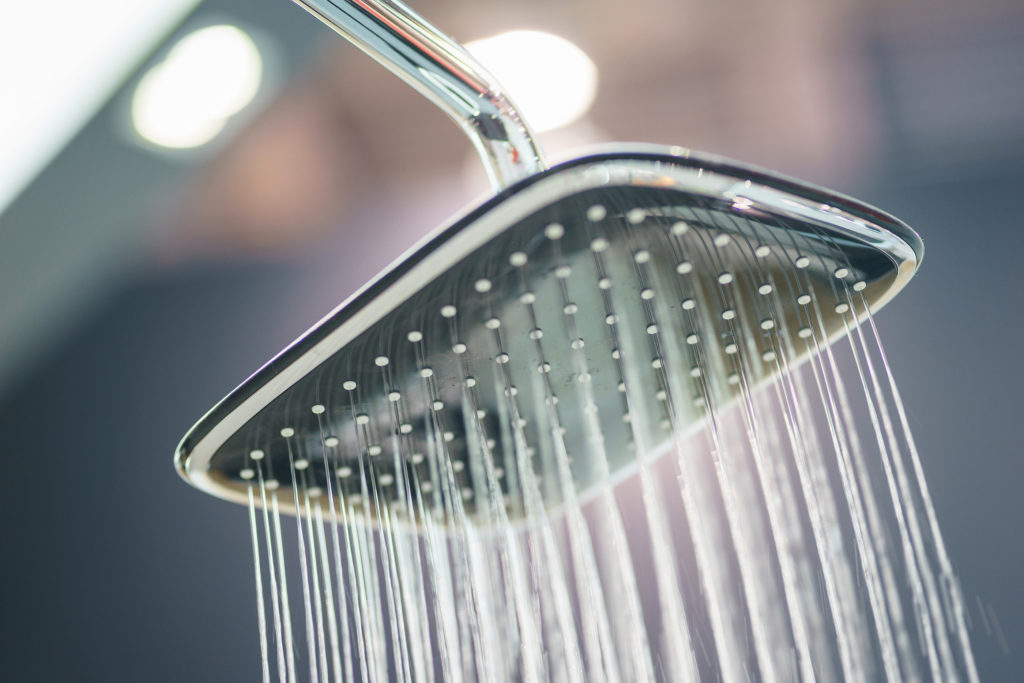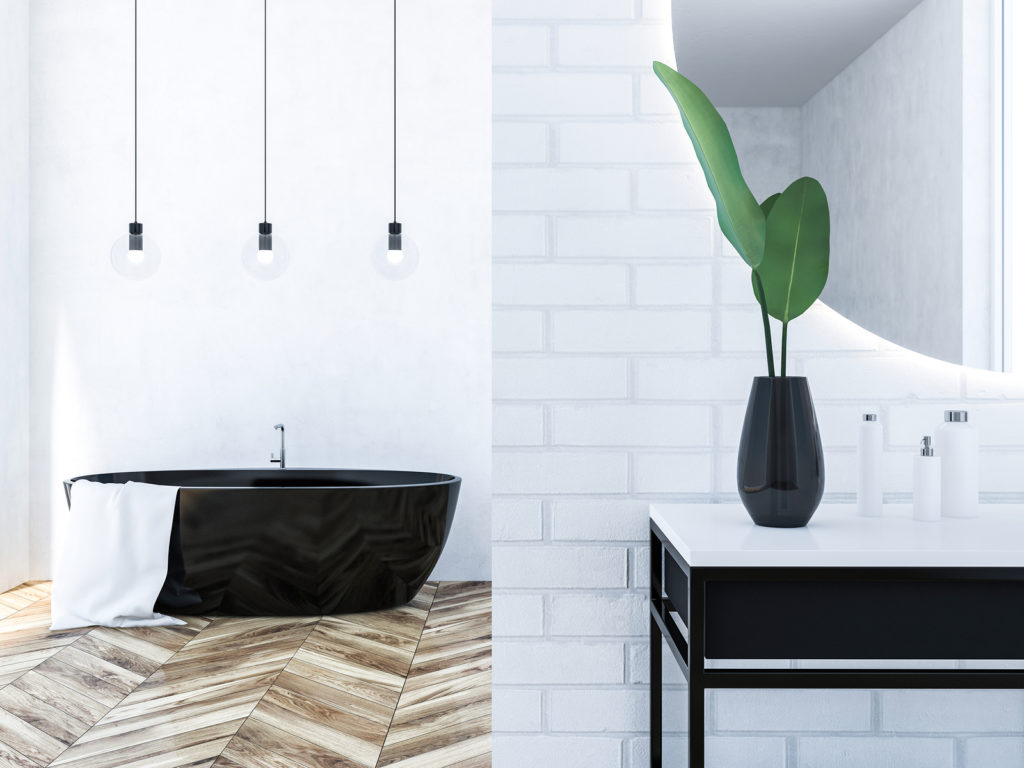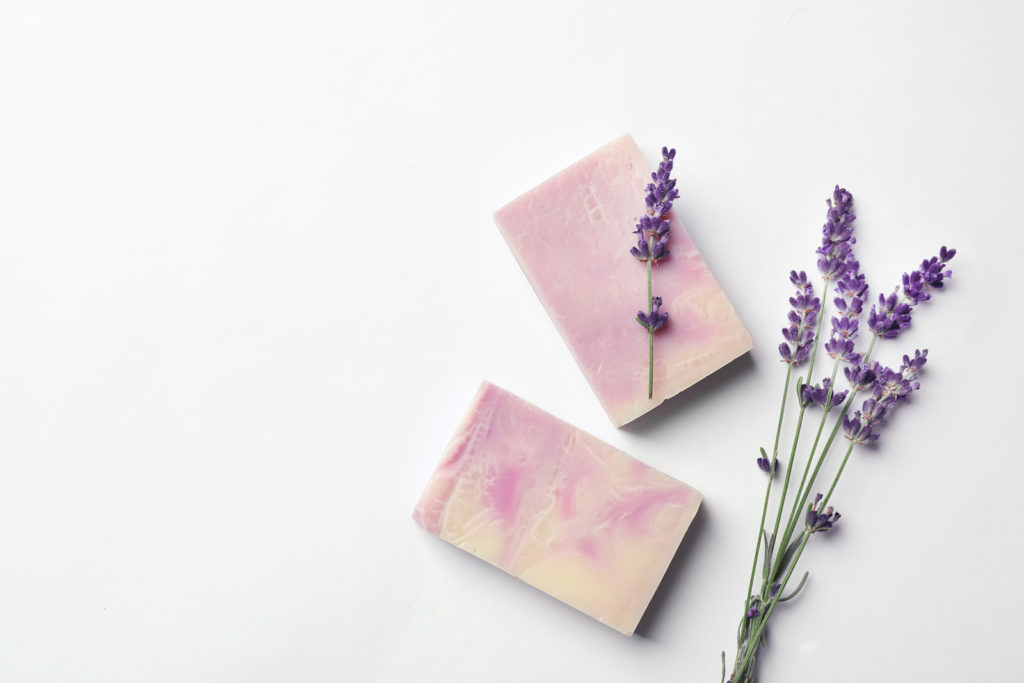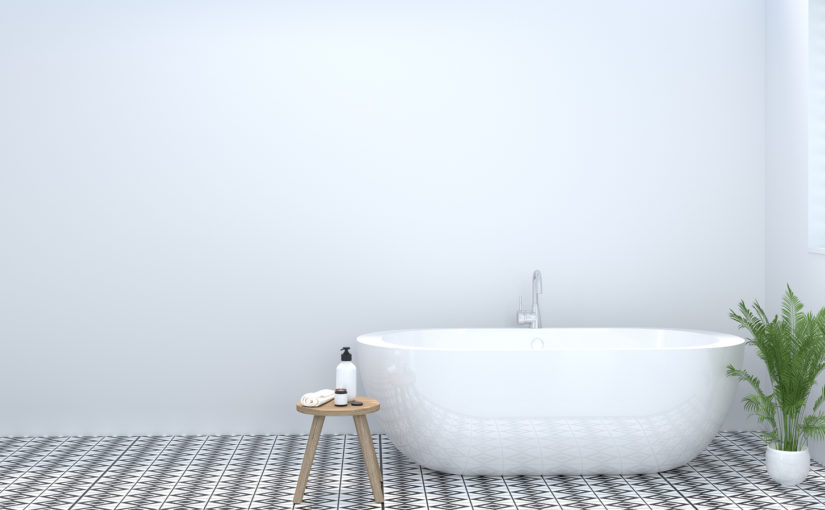Of all the rooms in a house, the bathroom rivals the kitchen for the most waste produced. However, it’s also the room where people are most likely to forget to be kind to the environment.
So, how can you create an eco-friendlier bathroom? Follow our top tips below to get started.
Reduce your water use

The average Briton uses 150 litres of water per day, through washing and drinking. A large proportion of this is used in the bathroom, and there are plenty of ways to lower your household’s usage. Inexpensive changes you can make include:
- Checking the bath temperature as you fill it so you don’t need to add more water in at the end.
- Taking a shower instead of a bath.
- Taking shorter showers — use a timer if it helps.
- Turning the tap off when brushing your teeth, shaving, etc.
- The installation of a water-saving showerhead.
- Checking for drips and leaks regularly (taps, toilet, shower, pipes, etc.)
- Only flushing toilet waste — not extras like tissues that can instead be placed in a bin.
- Making use of the dual-flush on your toilet cistern.
- Using the plug to fill the sink, rather than leaving the tap running while you wash.
More costly but highly effective changes:
- Installing a faucet aerator.
- Installing a high-efficiency toilet.
Change how you heat your bathroom
The most important aspect of keeping your bathroom warm is insulation — if the insulation isn’t sufficient, any heat you create in the room will dispense itself quickly, meaning it will take a lot more fuel to heat the same space.
When it comes to heating, opt for an eco-friendly energy supplier, and use dual-fuel technology so you can heat your bathroom independently of the rest of the house when you need to.
Buy second-hand

When you need something for your bathroom — be it a new bath, toilet or cabinet — you will usually be able to find a second-hand version to buy. This will be better for the environment and cheaper, too.
If you must buy new, make sure the item you’re purchasing is from a reputable company and is made from robust, eco-friendly materials.
Change your cleaning products
Conventional supermarket cleaning products are full of potentially harmful chemicals — both to human health and the environment. So, make your bathroom an eco-friendly one by switching these products out for safer alternatives.
For store-bought replacements, try Ecover or Method, or why not use natural products instead? White vinegar is anti-bacterial and excellent for cleaning most surfaces. Baking soda has many uses in the bathroom, too.
Buy sustainable bathing products

From toothpaste to toilet roll, there is a more sustainable version of everything you might use in the bathroom.
Consider switching out shower gel for bars of soap, and your regular toothbrush for a bamboo version (when it is ready for replacement, of course).
Don’t suddenly throw out all of your old products and replace them with eco-friendly versions, as that act in itself is not kind to the environment! Use up your old things first.
Update your lightbulbs
If you haven’t already — next time your lightbulbs blow, replace them with LED versions. LED bulbs consume an incredible 80 per cent less energy than their predecessors and last 25 times longer.
Want to work towards a ‘zero waste’ bathroom? You’ll find loads of handy hints and tips here and here.

I really enjoyed this article! I am already doing quite a few of the tips you recommended, however, I really appreciated all the facts regarding water consumption being laid out as clearly as you did! I will definitely apply some of your tips! keep up the good work and looking forward to more interesting content like this one!